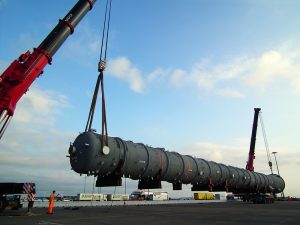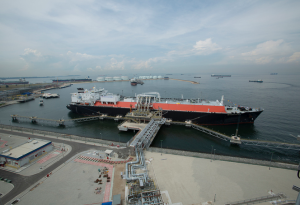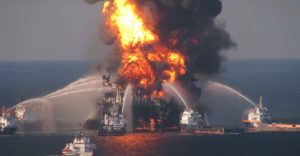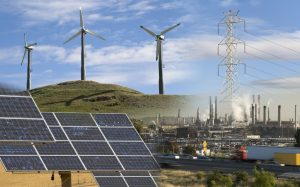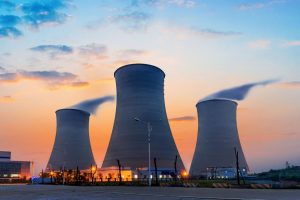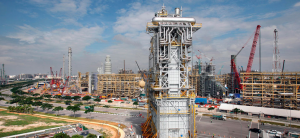Why Should You Pay Attention To Project Cargo?
There are a wide variety of cargoes, and majority of them fall within the definition of project cargo, from traditional break-bulk type cargoes to large single items such as cranes or oil and gas modules. For insurance purposes, cargo insurers stipulate certain condition, such as if the cargo to be carried has critical items, then certain procedures will have to be followed under the warranty. Critical items often fall under two broad headings: – Critical due to high cost and difficulty of replacement Require unusual provisions for safe loading, stowage, lashing and discharge Cargoes that fall under the ‘critical items’…
Read MoreHistory Of Carbonate Exploration in Southeast Asia
It is estimated that more than 60% of the world’s oil and 40% of the world’s gas reserves can be found in carbonate reservoirs. For instance, Middle East is dominated by carbonate fields – 70% of oil, 90% of gas reserves within these reservoirs. There is an estimate amount of 40 billion bbl of recoverable hydrocarbon worldwide, and about 40% (16 billion bbl) are found in tertiary buildups in Southeast Asia. Production from carbonate rocks in Southeast Asia started in the late 1800s, in Eastern Indonesia, with the discovery of Bula field on Seram Island. At the same time, there…
Read MoreSafety In LNG Operations
LNG is produced by cooling natural gas at atmospheric pressure to minus 260 degrees Fahrenheit, at which point it liquefies. It is odourless, colourless, noncorrosive, noncombustible, nontoxic and clean. When it is exposed to air, it vapourises quickly back to its gaseous state, and it will leave no polluting residue after vapourising. LNG has been a viable form of energy and has been safely handled for many years. Although, like any processing industry, it is not without its incidents and accidents, it maintained a good track of safety record. Since the mid-1960s, there are over 120 LNG storage facilities, about…
Read MoreCyber Security: A Case-Study of WannaCry
What is WannaCry? “It’s the name for a prolific hacking attack known as “ransomware”, that holds your computer hostage until you pay a ransom” – WannaCry ransomware: Everything you need to know, CNET On 12 May 2017, WannaCry had encrypted data on at least 75,000 computers in 99 countries, with European countries, including Russia being the most affected. By 15 May, it has brought down more than 200,000 computers in 150 countries have been affected. The victims include hospitals, banks, telecommunications companies, warehouses and many more. Once a computer is infected with WannaCry, it will encrypt all he data. The…
Read MorePreventing Human Error in High Risk Environment
“To err is human” – Alexander Pope Current plant operational experience has demonstrated that human error is a key contributing factor to operation inefficiencies, damage and plant accidents. Organisations have tried to improve plant operation and safety by placing emphasis on approaches to prevent the occurrence and limit the effects of human error. By addressing human errors, organisations can: – Reduced the chances of safety challenges Increased capacity factors and production Lower operations and maintenance cost Increased tolerance of operational errors Increased assurance for protection of plant investment Operational experience and industry studies have consistently proven that human error is…
Read MoreImplementing An Effective Service Level Agreement
A Service Level Agreement (SLA) is a negotiated agreement designed to create a common understanding about services, priorities and responsibilities. This is a useful tool that can help service providers and their customers better manage their expectations of each other. A good and properly created SLA takes effort and a certain level of rapport between the service provider and buyer. Both parties have to recognise that SLA serves as : – A communication tool – only through effective communication, achieving mutual understanding of interests can both parties establish a SLA Conflict-reduction tool – due to shared understanding of needs and…
Read MoreFinding The ‘Right’ Leadership In The Energy Sector
The oil, gas, power and utilities industries are undergoing major transformation. The fluctuations of commodity prices, changing business models, technological advancements, and many more, are the uncertainties that are affecting the sector. In light of all the uncertainties, it is important that organisations have the right leadership talent to lead them to organisation success and sustainability. Just like in any business, issues with leadership can lead to stifling of creativity, reduction in productivity and damaging the daily operations of the organisations. Executive leadership in the energy industry is made up predominantly of individuals who showed exceptional abilities in managing collaborative…
Read MoreKey Considerations in Refractories
Refractories are a vital component of industrial manufacturing, and are used in every type of industrial process that utilises heat. They have been referred to as the ‘backbone of industry’, they are commonly used during the heat and chemical processing of all commodities such as cars, buildings, transportation infrastructure, etc. Refractory refers to a variety of materials that are non-metallic and heat resistant Refractories ought to withstand significant stress caused by heat and corrosion by chemical agents, and contain substances at high temperatures. Refractories is a substantial investment for many industrial facilities, and poor selection decision can be a liability…
Read MoreDirect Fired Heaters & Their Design
In the process plant industry, heat is one of the essentials. Equipment that produces and supplies in heat requirement to process plant is called a furnace. A direct fired heater is a style of heater in which a burner provides hot gases that transfer their heat energy to a process liquid or gas flowing directly through coils installed inside the heater vessel. It can utilise radiant and/or convection heat transfer sections, and can be configured in many different ways depending on the customers’ specific requirements. The choice of furnace style and design is crucial for the best performance of furnace.…
Read MoreKey Functions Of Effective Corporate Communication
Corporate communication is a management function that is committed to the dissemination of information to key constituencies, execution of corporate strategy and the development of messages for internal and external circulation. Corporate communication is a representative of an organisation and is responsible for retaining the reputation and image of the organisation. Corporate communication fulfills the functions of planning, organising, leading and controlling. The importance of communication can be boiled down to the following:- Communication clarifies the tasks that are supposed to be undertaken by the respective departments, the manner they are performing the tasks, and how to improve. Communication is…
Read More
